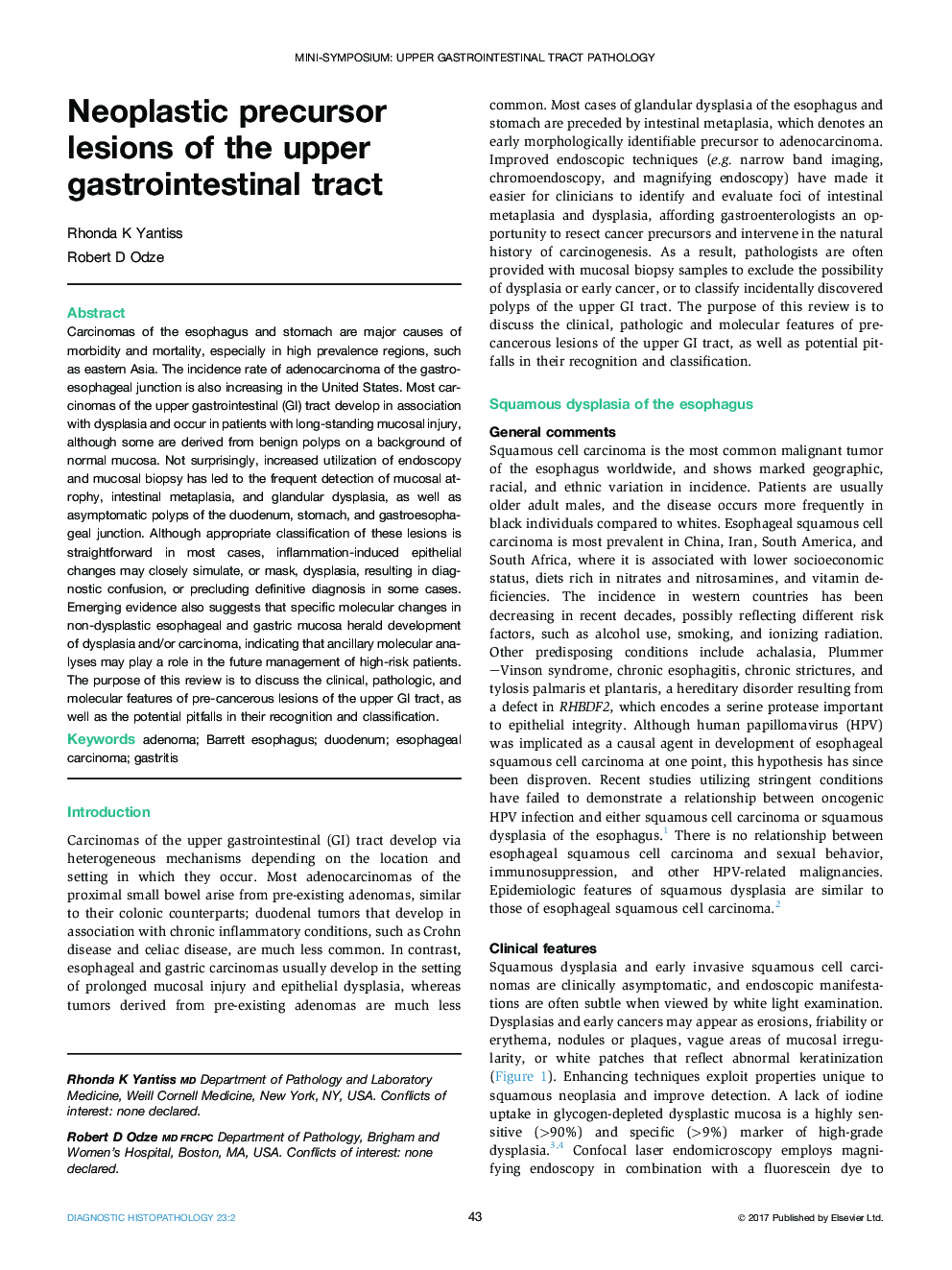| Article ID | Journal | Published Year | Pages | File Type |
|---|---|---|---|---|
| 5716036 | Diagnostic Histopathology | 2017 | 19 Pages |
Carcinomas of the esophagus and stomach are major causes of morbidity and mortality, especially in high prevalence regions, such as eastern Asia. The incidence rate of adenocarcinoma of the gastroesophageal junction is also increasing in the United States. Most carcinomas of the upper gastrointestinal (GI) tract develop in association with dysplasia and occur in patients with long-standing mucosal injury, although some are derived from benign polyps on a background of normal mucosa. Not surprisingly, increased utilization of endoscopy and mucosal biopsy has led to the frequent detection of mucosal atrophy, intestinal metaplasia, and glandular dysplasia, as well as asymptomatic polyps of the duodenum, stomach, and gastroesophageal junction. Although appropriate classification of these lesions is straightforward in most cases, inflammation-induced epithelial changes may closely simulate, or mask, dysplasia, resulting in diagnostic confusion, or precluding definitive diagnosis in some cases. Emerging evidence also suggests that specific molecular changes in non-dysplastic esophageal and gastric mucosa herald development of dysplasia and/or carcinoma, indicating that ancillary molecular analyses may play a role in the future management of high-risk patients. The purpose of this review is to discuss the clinical, pathologic, and molecular features of pre-cancerous lesions of the upper GI tract, as well as the potential pitfalls in their recognition and classification.
